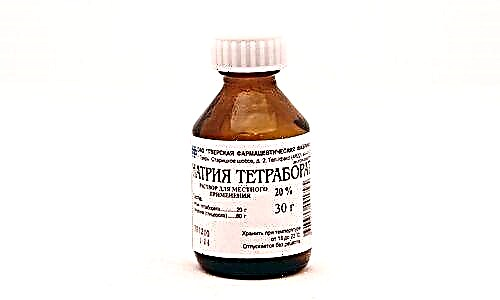
Chronic diseases of the digestive system are the most common diseases in young children and adolescents. In the structure of childhood morbidity in a number of countries, they even occupy a leading place. In our country, every day doctors give young patients new diagnoses of chronic diseases of the gastrointestinal tract.

In what cases is the appointment indicated?
All medical nutrition systems were developed by the famous physician and scientist M. Pevzner. He scientifically substantiated that the use of specific useful products and the exclusion of products dangerous for the child's body helps to reduce the number of exacerbations of chronic diseases of the gastrointestinal tract in children, as well as prevent the occurrence of new ones.

Diet number 3 is shown for children who have:
- Chronic inflammatory diseases of the stomach and intestines. Most often these are gastritis and enterocolitis, occurring with symptoms of constipation or diarrhea (as well as with their combination or alternation).
- The end portions of the colon are damaged. These can be various cracks and enlarged hemorrhoids.
- Diseases of digestion associated with the occurrence of meteriosis or abdominal swelling due to the increased formation of gas in the intestines. Impaired bowel function makes it difficult to regularly empty and remove accumulated toxic gases.

Basic Rules
Diet number 3 is aimed at correcting the existing disorders in the body associated with reduced bowel function. It is fairly balanced in all the nutrients it needs.
The basic principles of the diet include:
- Nutrient Ratio: 40% - protein products, 45% - carbohydrates, 15% - healthy fats. Among protein products, lean meats, poultry or fish should be distinguished. They are all high quality sources of good animal protein. From vegetable protein, you should choose those foods that can cause less gas production (for example, beans). It can be boiled and used as a side dish with meat or added to soup.
- The basis of carbohydrates should be a variety of cereals. Oatmeal has an excellent laxative effect. In its composition, it contains a large amount of plant fiber, which makes the intestines work much faster.
- All types of refined food should be excluded. The more fiber you eat, the better for your intestinal motility. Fiber is a natural catalyst for bowel function. It promotes gentle cleansing by expelling any processed food debris. If the diet contains a lot of fried foods and few vegetables, the intestines begin to work more slowly. The child develops constipation.
- Sufficient drinking regime. A small child needs as much water as is necessary to compensate for all the fluids he wastes during sweating or breathing. In the summer, the body needs much more water. It is impossible to say unequivocally about how much a child should drink. It depends on his age, time of year, as well as the region where he lives. A seven year old child will need much more water than a three year old. Pay attention if your child asks for water or is thirsty. Be sure to give him clean water at room temperature.

What should be added to the diet?
It is worth eating foods and dishes:
- wholemeal bread from yesterday's baked goods;
- mostly vegetable soups;
- low-fat varieties of meat, fish, poultry;
- fermented milk drinks;
- buckwheat, millet, barley cereals in the form of crumbly cereals;
- beets, carrots, tomatoes, cucumbers, zucchini, pumpkin, cauliflower;
- raw fresh sweet fruits and berries in increased quantities;
- honey, jam, marmalade;
- soaked dried fruits (prunes, apricots, figs);
- broth of wild rose and wheat bran, fruit and vegetable juices.


What should be excluded from the menu?
Eliminate the following foods and dishes from your diet:
- bread from flour of the highest grades, baked goods;
- fatty meats, fish, poultry;
- smoked meats, canned food;
- rice, semolina, vermicelli, legumes;
- radish, radish, garlic, onion, mushrooms;
- jelly;
- blueberries, quince;
- chocolate;
- cream products, spicy and fatty sauces;
- horseradish, mustard, pepper;
- cocoa, strong tea;
- animal and cooking fats.
How to create a menu?
The third Pevzner diet helps to normalize the work of the entire intestine, accelerates its motility and the movement of food through the gastrointestinal tract. It also helps to slow down putrefactive and fermentative reactions in the intestine. This diet helps to normalize the correct and healthy intestinal microflora, to cure dysbiosis.
When drawing up the menu, focus on the preferences of the child. If he prefers porridge and vegetables, he should not overload his diet with meat products.

Example
Monday
- Breakfast: Oat flakes porridge with dried fruits.
- Lunch: Fruit salad of different fruits with raisins.
- Dinner: Soup with turkey meatballs and vegetables. White cabbage and carrot salad.
- Afternoon snack: Carrot casserole with dried apricots.
- Dinner: Pink salmon cutlets with buckwheat porridge. Cucumber salad with bell pepper and parsley.

Tuesday
- Breakfast: Cottage cheese casserole with banana.
- Lunch: Kissel from pears with dry low-fat biscuit.
- Dinner: Soup from non-sour cabbage with a slice of young lean beef.
- Afternoon snack: Yogurt with prunes.
- Dinner: Hake baked in a sleeve in its own juice with boiled potatoes. Grated carrot and apple salad.


Wednesday
- Breakfast: Homemade granola with dried fruits and milk.
- Lunch: Yogurt with apple and banana.
- Dinner: Vegetable soup with broccoli and fish balls.
- Afternoon snack: A glass of kefir.
- Dinner: Chicken meatballs with buckwheat. In addition - Peking cabbage salad with orange and carrot.


Thursday
- Breakfast: Millet porridge with banana and dried apricots.
- Lunch: Cottage cheese casserole.
- Dinner: Oven baked cod with seasonal vegetable garnish.
- Afternoon snack: Carrot and walnut salad.
- Dinner: Pollock dumplings with cucumber salad.

Friday
- Breakfast: Corn porridge in milk with a little butter.
- Lunch: Fruit salad of pears and prunes.
- Dinner: Broccoli soup with chicken meatballs.
- Afternoon snack: Curd soufflé with sour cream.
- Dinner: Chicken breast cutlets with green bean puree.

Saturday
- Breakfast: Carrot and curd salad with raisins.
- Lunch: Oatmeal cupcake with kefir.
- Dinner: Chicken stewed with vegetables. In addition - millet porridge.
- Afternoon snack: Steamed prunes.
- Dinner: Buckwheat porridge with vegetable sauce.


Sunday
- Breakfast: Barley porridge with hard boiled egg.
- Lunch: Carrot salad with green grated apple.
- Dinner: Young cabbage soup. Turkey meatballs with buckwheat.
- Afternoon snack: Homemade curd with raisins and dried apricots.
- Dinner: Zucchini baked with chicken balls.

Children love it when the plate is decorated with pieces of vegetables or fruits.
Diet No. 3 is aimed at correcting changes in all diseases that occur with a decrease in the motor function of the intestines. Regular adherence to such a diet will prevent the development of constipation in a child and normalize the stool.

For more information on foods that help with constipation, see the following video.



